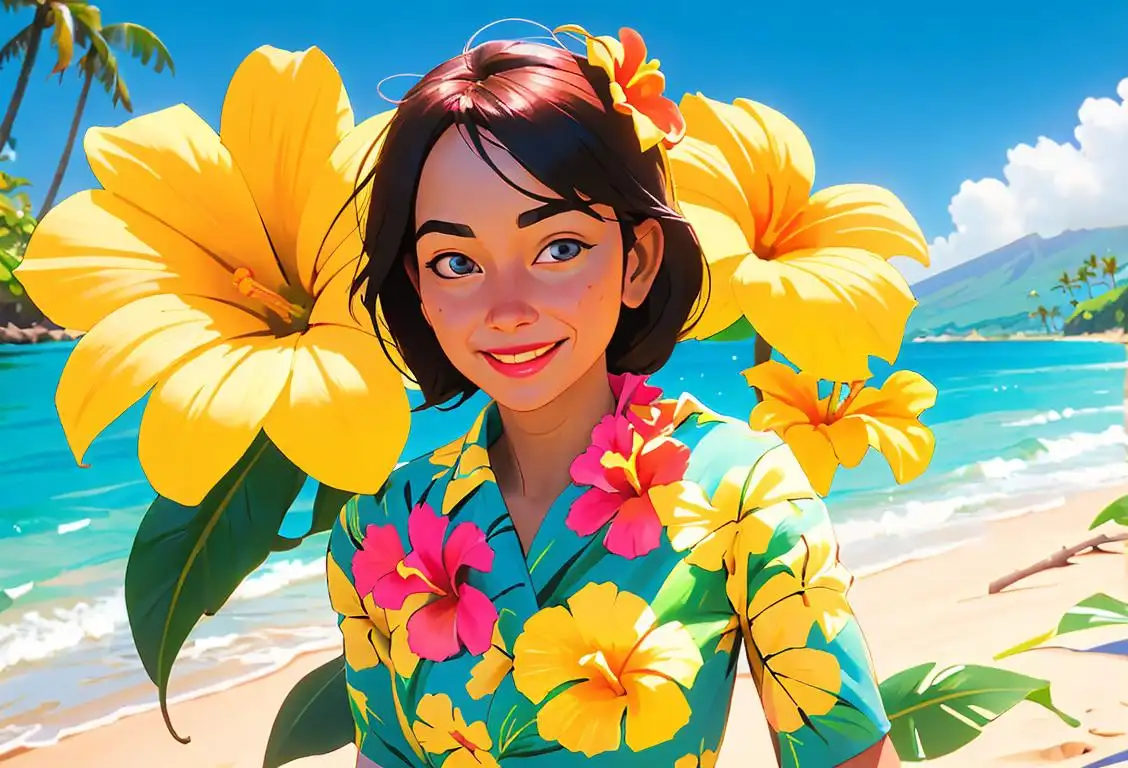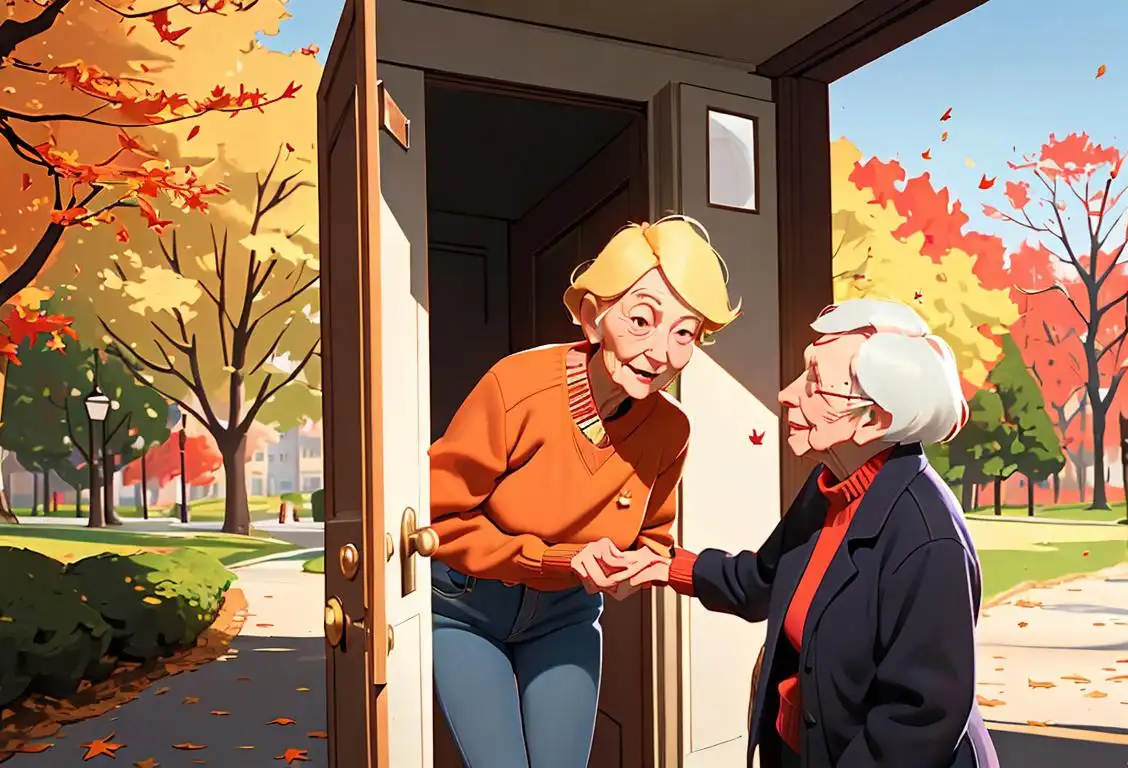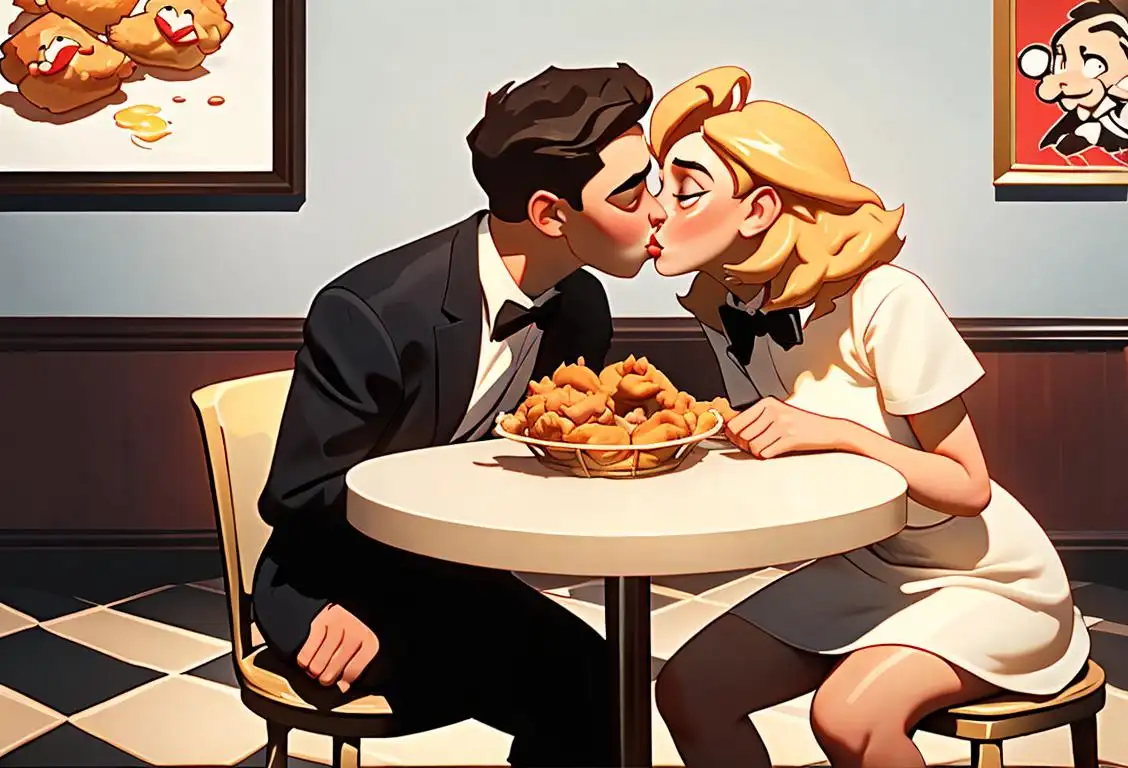National Lei Day

Get ready to put on your floral crowns and embrace the spirit of aloha because it's National Lei Day! This tropical holiday celebrates the vibrant culture of Hawaii and the beauty of the lei, a traditional Hawaiian garland made of fresh flowers, leaves, shells, or even candy. So, slip into your flip-flops, grab a refreshing Mai Tai, and let's dive into the world of National Lei Day!
When is Lei Day?
It's national lei day on the 1st May.
The Origins of National Lei Day
Hawaii is known for its stunning landscapes, breathtaking beaches, and laid-back island vibes. But it's the lei that truly captures the essence of Hawaiian hospitality and aloha spirit. The tradition of giving and receiving leis has been a part of Hawaiian culture for centuries. However, it wasn't until the early 20th century that National Lei Day, also known as May Day, was officially recognized.
The idea for National Lei Day was born in 1927 when a Honolulu newspaper columnist named Don Blanding suggested the creation of a day dedicated to celebrating leis. Blanding believed that the lei represented everything that was wonderful about Hawaii - its beauty, warmth, and the lei's ability to bring people together in friendship and love. His idea was embraced by the community, and on May 1, 1928, the first National Lei Day was celebrated.
Since then, National Lei Day has become an annual tradition in Hawaii, with festivities including lei-making competitions, music and dance performances, and the crowning of the Lei Queen and Court. It's a day for locals and visitors alike to immerse themselves in the rich Hawaiian culture and experience the true spirit of aloha.
The Art of Lei-Making
Creating a lei is both an art form and a labor of love. Skilled artisans, known as kahuna nui, carefully select and string together an array of fragrant flowers, leaves, and other natural materials to create stunning garlands. The flowers often used in leis include the fragrant plumeria, vibrant orchids, and delicate pikake.
Each lei carries its own special meaning. For example, a maile lei is considered a symbol of love and respect, while a ti leaf lei is associated with good luck and protection. The recipient of a lei is typically greeted with a warm hug and the traditional Hawaiian greeting, "Aloha!"
Today, you'll find leis being worn at weddings, graduations, birthdays, and other special occasions around the world. They serve as a beautiful symbol of love, friendship, and celebration.
Did You Know?
Did you know that the longest lei ever created measured a staggering 4,400 feet? That's longer than 13 football fields! This record-breaking lei was made in 2001 in Honolulu to celebrate National Lei Day, and it showcased a stunning array of fresh flowers and foliage. Now that's lei-making on a grand scale!
History behind the term 'Lei'
1820
Arrival of Protestant missionaries
In 1820, Protestant missionaries from New England arrived in the Hawaiian Islands. They brought with them new ideas and customs that would significantly influence Hawaiian culture.
Ancient Polynesia
The Birth of the Lei
The term 'lei' originates in ancient Polynesia, where it was an integral part of the culture. The Polynesians, who migrated across the Pacific, used various natural materials like flowers, leaves, shells, and feathers to create decorative garlands. These garlands, known as 'lei,' were often worn as symbols of love, friendship, and celebration. The practice of making and gifting leis played a significant role in Polynesian society, fostering connections and promoting harmony.
1850
Invention of the term 'lei'
During the 1850s, the term 'lei' was coined to refer to the garlands and wreaths that were commonly made and worn by Hawaiians. 'Lei' comes from the Hawaiian word 'ho'olei,' which means 'to intertwine' or 'to place around.'
18th Century
Introduction to Hawaii
In the 18th century, with the arrival of Captain James Cook and European explorers, the lei tradition was introduced to the Hawaiian Islands. The Hawaiians embraced leis as a symbol of their identity and incorporated their own unique materials and techniques into lei-making. Flowers such as plumeria, orchids, and carnations became popular choices. Lei-making workshops and classes flourished, passing on the knowledge and skills from one generation to the next.
19th Century
Lei Tourism
In the 19th century, Hawaii experienced an influx of visitors, both from the mainland United States and other countries. These tourists were captivated by the beauty and cultural significance of leis, leading to the rise of lei tourism. Travelers were eager to participate in lei-making workshops, purchase pre-made leis as souvenirs, and witness lei ceremonies. The lei became an iconic symbol of Hawaii, representing its warm hospitality and aloha spirit.
1900
Decline in lei-making
At the turn of the 20th century, the art of lei-making faced a decline due to the influence of Western customs and the introduction of foreign flora and fauna. The Hawaiian tradition of lei-making was in danger of being lost.
20th Century
Symbol of Celebration and Commemoration
During the 20th century, the lei's popularity continued to grow as it became synonymous with celebrations and special occasions. Lei presentations became an integral part of welcoming dignitaries, greeting arriving passengers at airports, and honoring achievements. The lei was also used to commemorate important milestones, such as graduations, weddings, and birthdays. Its significance reached beyond Hawaii, with people around the world recognizing and appreciating the beauty and symbolism of leis.
1920
Revival of lei-making
In the 1920s, a cultural revival took place in Hawaii, leading to a renewed interest in traditional Hawaiian arts and crafts. Lei-making experienced a resurgence, and efforts were made to document and preserve the various techniques and styles of lei-making.
Present Day
Continued Tradition and Innovation
Today, the tradition of lei-making and gifting thrives in Hawaii and beyond. Leis are handmade with care and creativity, using a wide array of materials ranging from traditional flowers to feathers, shells, candies, and even synthetic elements. Lei festivals, competitions, and events bring together enthusiasts and skilled artisans to showcase the artistry and cultural significance of leis. The lei remains a cherished symbol of love, friendship, celebration, and the vibrant spirit of Polynesia.
1928
First Lei Day celebration
On May 1, 1928, the first Lei Day celebration was held in Honolulu, Hawaii. The day was established to honor the Hawaiian tradition of lei-making and to promote the culture of the islands. It featured lei-making contests, music, hula dancing, and parades.
1929
Official recognition of Lei Day
In 1929, Lei Day was officially recognized as a holiday in the Territory of Hawaii. The date was set as April 1 to coincide with the birthday of the famous Hawaiian musician and composer, Don Blanding, who played a crucial role in popularizing the holiday.
1959
Statehood of Hawaii
On August 21, 1959, Hawaii became the 50th state of the United States. Lei Day continued to be celebrated as an important cultural holiday, representing the unique heritage and traditions of Hawaii.
2001
Official recognition of lei as a symbol of Hawaii
In 2001, the lei was officially recognized as a symbol of Hawaii by the state legislature. The lei represents the spirit of aloha, unity, and the connection between the people and the land. It has become an iconic symbol of the Hawaiian Islands.
Did you know?
Did you know that the longest lei ever created measured a staggering 4,400 feet?Tagged
romance fun loved onesFirst identified
1st May 2016Most mentioned on
1st May 2016Total mentions
26Other days
Love Your Red Hair Day
Do Something Nice Day
Suicide Prevention Month Day
Kissing Fried Chicken Day
Kiss A Ginger Day
Iloveyou Day
Compliment Day
Happiness Day
Tv On The Same Day
Boyf Day









